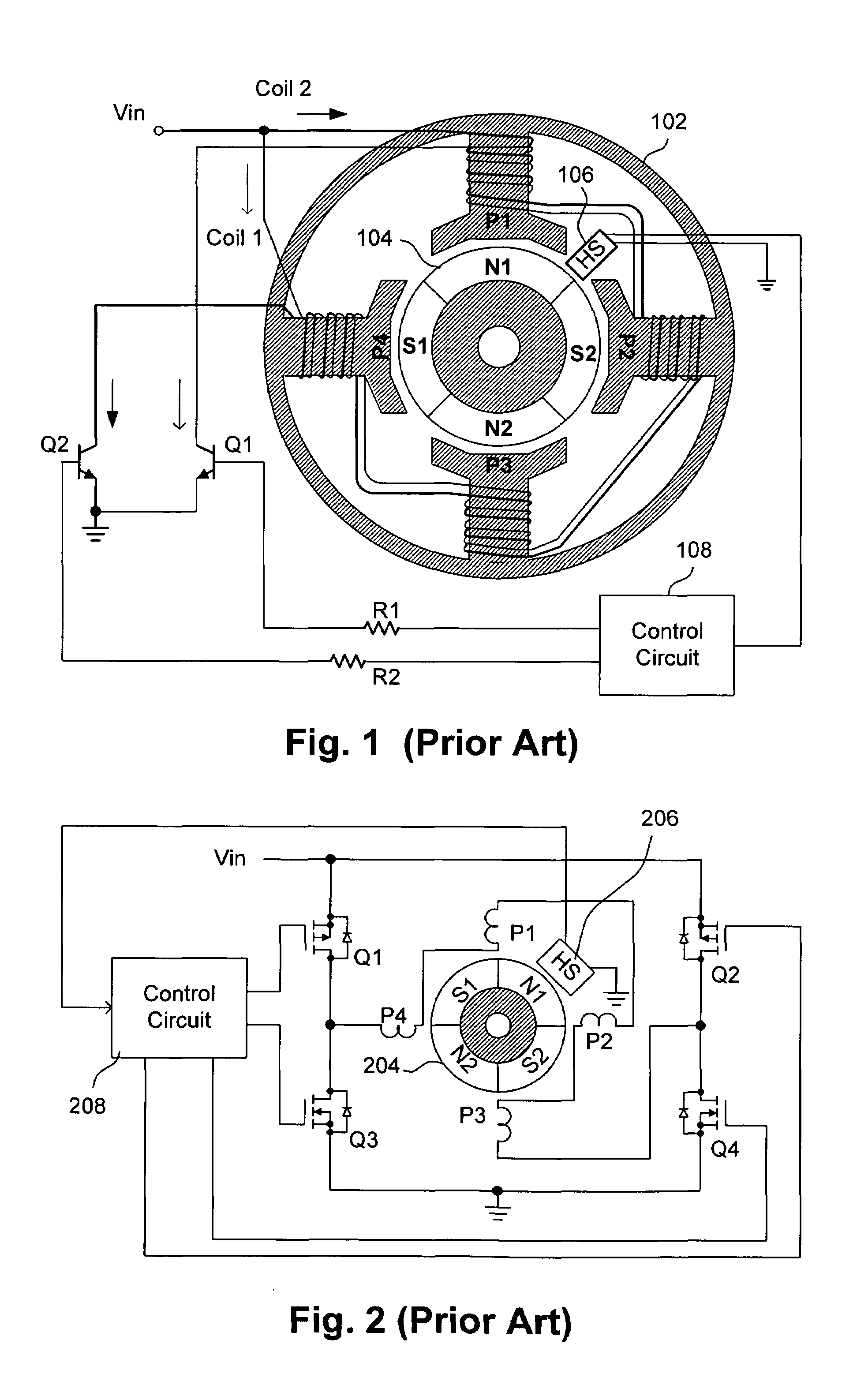Speed control of brushless DC motors
a brushless dc motor and speed control technology, applied in the direction of motor/generator/converter stopper, dynamo-electric converter control, instruments, etc., can solve the problems of poor efficiency, cumbersome and unreliable commutator and brush structure, linear regulators tend to dissipate significant power loss, etc., to achieve good open-loop speed regulation, reduce noise, reduce nois
- Summary
- Abstract
- Description
- Claims
- Application Information
AI Technical Summary
Benefits of technology
Problems solved by technology
Method used
Image
Examples
Embodiment Construction
[0052]Reference will now be made in detail to the preferred embodiments of the present invention, examples of which are illustrated in the accompanying drawings. Wherever possible, the same reference numbers are used in the drawings and the description to refer to the same or like parts.
[0053]FIG. 8 is a circuit diagram of one preferred embodiment of the present invention. Brushless DC (BLDC) motor 800 has a rotor 804 disposed within vertical stator poles and horizontal stator poles (not illustrated). The apparatus 810 for controlling the speed of BLDC motor 800 comprises a Hall sensor (HS) 816, a first switch 812, a second switch 814, and a turn-on delay control circuit 820. Hall sensor 816 detects a magnetic rotor section of rotor 804. First switch 812 produces magnetic north on the vertical stator poles and magnetic south on the horizontal stator poles of BLDC motor 800. Second switch 814 produces magnetic south on the vertical stator poles and magnetic north on the horizontal st...
PUM
 Login to View More
Login to View More Abstract
Description
Claims
Application Information
 Login to View More
Login to View More - R&D
- Intellectual Property
- Life Sciences
- Materials
- Tech Scout
- Unparalleled Data Quality
- Higher Quality Content
- 60% Fewer Hallucinations
Browse by: Latest US Patents, China's latest patents, Technical Efficacy Thesaurus, Application Domain, Technology Topic, Popular Technical Reports.
© 2025 PatSnap. All rights reserved.Legal|Privacy policy|Modern Slavery Act Transparency Statement|Sitemap|About US| Contact US: help@patsnap.com



